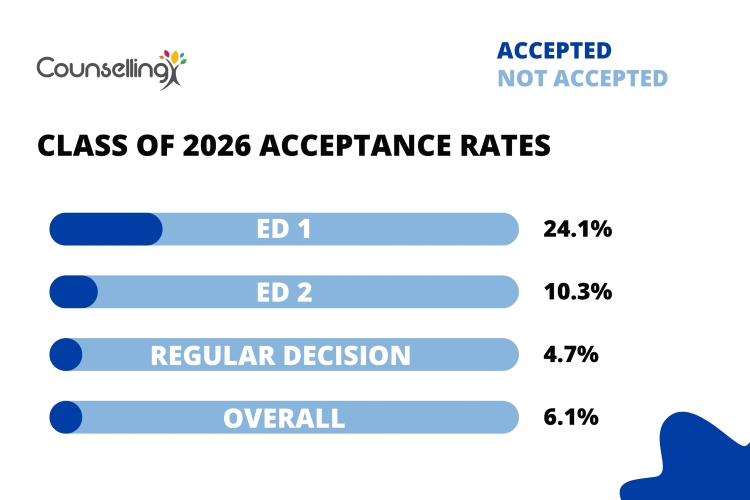Many students aiming for selective colleges strive for an excellent SAT score. This score not only distinguishes them from other candidates but also showcases their academic abilities, making a positive impression on admissions committees.
While few students target a perfect score of 1600, this blog discusses the requirements for achieving such a score, the rarity of reaching 1600, and the scenarios in which aspiring for this benchmark is worthwhile. In the sections that follow, we will share our insights for obtaining a perfect 1600 SAT score and evaluate its significance.
Who gets a perfect SAT score?
Starting in 2024, the digital SAT keeps the perfect score at 1600, necessitating a perfect 800 in both the Reading & Writing and Mathematics sections.
Who, then, can actually achieve a perfect score on test day?
The answer, as you might expect, is almost no one!
College Board’s statistics from the 2024 test reveal that only the top 1% of test takers score 1530 or higher.
Per the College Board’s Understanding Digital SAT Scores, the percentile for scores exceeding 1570 is 99+. Unfortunately, this doesn’t provide much detail, and it merely indicates that at this score level, you belong to an even smaller segment of that top 1%.
When we look at section-specific breakdowns, just 1% of students earn a 790 or 800 in Math, and again, only 1% score 760 or higher in Reading & Writing. While this doesn’t give us the complete picture, it clearly shows that fewer than 1% of all SAT test takers achieve a perfect score of 1600.
What is the process of SAT scoring?
Having explored the benchmarks for a good SAT score at leading universities, let’s examine how the SAT scoring system functions. The SAT is scored on a 1600-point scale, comprising two sections: Math and Reading and Writing, each rated between 200 and 800. Importantly, there's no penalty for incorrect answers, so your raw score reflects the total number of correct responses. These raw scores are then converted into scaled scores, which help establish percentile rankings. The percentile demonstrates your performance relative to other test takers.
For instance, scoring in the 72nd percentile means you performed better than 72% of those who took the SAT. This method ensures your score remains consistent despite variations in test forms or the abilities of other students. The scaled score is what you will receive when your results are released.
How many questions can you miss and still achieve a perfect score?
We would like to give a clear answer, but regrettably, that’s not possible. The scoring system has experienced considerable changes since the SAT shifted to a digital format in 2024.
The SAT now utilises an adaptive testing approach for all sections. Each section is divided into two equal-length subsections or modules. The first module is the same for each student, but the second module is chosen based on your performance in the first one.
If you do well in the first Reading and Writing module, you’ll encounter significantly more challenging questions in the second module, unlike someone who struggled initially. This also allows you to be assigned to a higher scoring tier than a test-taker who did poorly on the first module.
Therefore, simply knowing how many questions you answered correctly doesn’t offer much meaningful insight. In theory, you might correctly answer more questions than another candidate and still end up with a lower score.
It’s crucial to remember this important information, especially since the new digital test includes a lot of uncertainties. That said, for a perfect score, you should aim to miss almost no questions. Each test may have a slightly different scoring curve, but the only way to ensure a perfect SAT score is to leave no questions unanswered.
Does achieving a perfect score really matter?
While it may seem that the distinction between a 1590 and a 1600 amounts to just 10 points, it’s more complex than that.
The SAT, similar to most standardized exams, is scored on a normal distribution basis, which means it’s curved so that each score reflects a specific percentage of test takers. We’ve included a sample normal distribution table below, but don’t dwell on it too much: the key takeaway is that the percentage of students decreases rapidly as you reach the far ends of the scoring spectrum.
Since 1600 sits at the extreme upper end of the SAT scoring scale, only a minuscule number of students achieve this score. What this implies is that scoring 1600 on the SAT will distinguish you at any university. Even at prestigious institutions like Harvard or Yale, where a score of 1540+ is required to be competitive–a 1600 remains quite uncommon.
In addition to its rarity, the difference between 1600 and 1590 signifies a clear divide between perfection and imperfection. A score of 1590 is an excellent achievement, yet 1600 demonstrates an exceptional level of focus, attention, and discipline that leads to flawless results.
We’re not suggesting that every student should strive for 1600, but if you possess the capability, indicating you can easily attain a score in the 99th percentile, we advise you to focus your preparation efforts specifically on reaching that perfect score.
Interesting Read: Importance of GRE in College Admissions
How can you prepare for a 1600 SAT score?
The following guidance is aimed at students who are already scoring in the mid to high 1500s and are striving for a perfect 1600. If your score is below this level, you should explore our other SAT preparation resources that are specifically created to elevate your score into the top 1%.
If you’re among the top 1%, you might feel like you’ve hit a plateau. Are you missing just one or two questions per section on each practice test? Do you catch yourself making simple errors that are obvious upon review? These are common challenges faced by those who are close to achieving a 1600.
So, how can you specifically adjust your test preparation to attain a 1600?
First, deepen your knowledge of the content
If you're aiming for a perfect 1600, you must be familiar with every concept, strategy, and idea. How can you assess your understanding?
Practice tests are an excellent tool. However, they are quite limited for the digital SAT. A valuable resource for honing your skills is the SAT Digital Question Bank. It features thousands of questions from the College Board, allowing you to focus on various difficulty levels, question types, and specific concepts.
If you struggle with any of these questions, it's time to hit the books: numerous free resources are available to reinforce your grammar and math skills. Moreover, don't forget about the expert tutors at MTS, who are seasoned test prep instructors with a decade of experience and have helped thousands of students conquer their dreams. They are well-versed in every concept and can clarify any nuance of the test.
Perfect your timing
If you're good at scoring, timing is probably not a concern for you. However, when we discuss "perfecting" timing, it entails more than just finishing the test promptly.
Mastering SAT timing means developing a highly effective pacing strategy that allows you to complete the test with time to spare while incorporating a comprehensive review process that makes the most of every available second.
As a general rule, strive to finish each section with 15% of the total time still available. This isn’t a strict requirement every time; instead, it serves as a minimum benchmark to help ensure you’re prepared for test day.
Create methods to avoid “silly mistakes"
All students echo this sentiment, "That was just a silly mistake." Often, this is accurate; when consistently scoring 1550 or above, many errors can stem from simple miscalculations, misinterpretations of the question, or overlooking a word in the answer choice.
However, these minor mistakes can impact your score just as much as more significant errors, so it's essential to develop your personal strategy to minimise them. While we can offer some general tips below, finding what works for you is fundamentally a personal journey. Each student has their unique way of thinking, reading, and testing.
Here are some commonly effective tips for students:
• Emphasize the question itself
• Underline key terms, units, or crucial modifiers
• Always double-check certain calculations (like negatives, fractions, percentages, etc.)
• Reattempt specific types of questions each time.
Ultimately, what proves most effective will depend entirely on the types of questions you typically miss and the reasons behind those errors. Focus on developing personalised strategies, or collaborate with an expert to refine methods tailored to your specific “silly mistakes.”
Practice, review, practice, review, practice
While it may not be thrilling, it’s effective: the primary distinction between students scoring a 1590 and those reaching 1600 is that the latter practice more efficiently. Taking numerous practice tests is crucial, but using them wisely is equally important.
Here’s a recommended exercise if you find yourself missing a few questions on each practice test: for each question you get wrong, set a timer for 5 minutes. During this time, focus solely on what went wrong with that particular question and outline specific strategies to avoid making the same error.
It may seem excessive to spend much time on a single question, especially if it was a simple oversight, but it trains you to analyse every element of the problem instead of simply thinking, "I won’t miss it next time.” Examine the concepts involved, discern the tricks the SAT employs, and pinpoint what specific wording or style of the question contributed to your mistake.
Additionally, keep a record; as you aim for that perfect 1600, you should be tracking every missed question along with notes on the errors and your planned strategies to prevent them in the future.
Conclusion
Achieving a perfect 1600 SAT score is a remarkable feat that requires dedication, careful planning, and a thorough understanding of the test structure. Although only a small fraction of students achieve this prestigious score, those who do distinguish themselves in the competitive arena of university admissions. However, attaining a perfect score is not crucial for success; what truly matters is demonstrating strong academic abilities and realising your full potential. Expert counsellors at CounsellingX advise students that improving their study techniques, avoiding common pitfalls, and practising with intent can enhance their scores to the best of their ability. Whether you aspire to attain a 1600 or simply a commendable SAT score, the key elements are perseverance, strategic preparation, and a commitment to continuous improvement.











